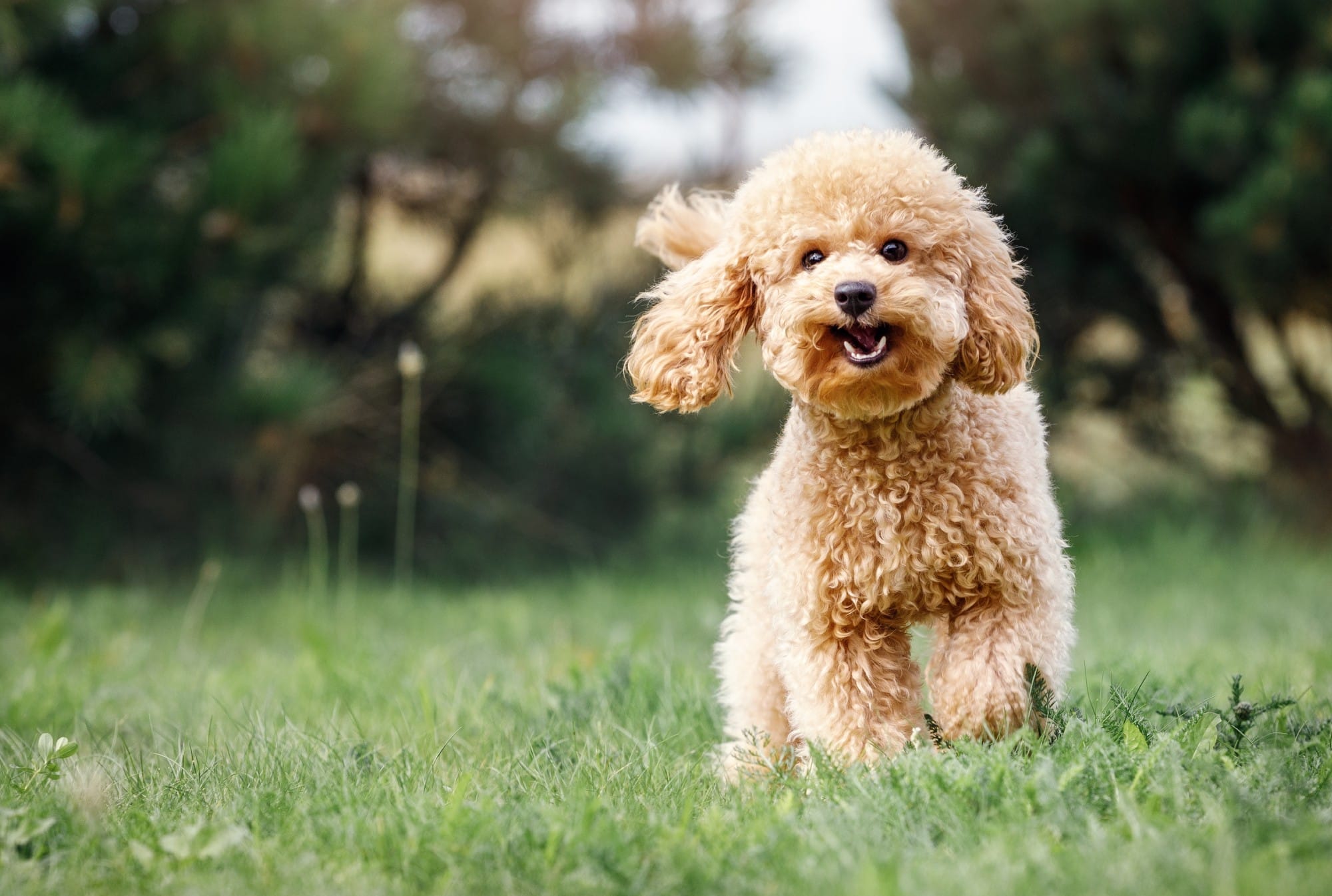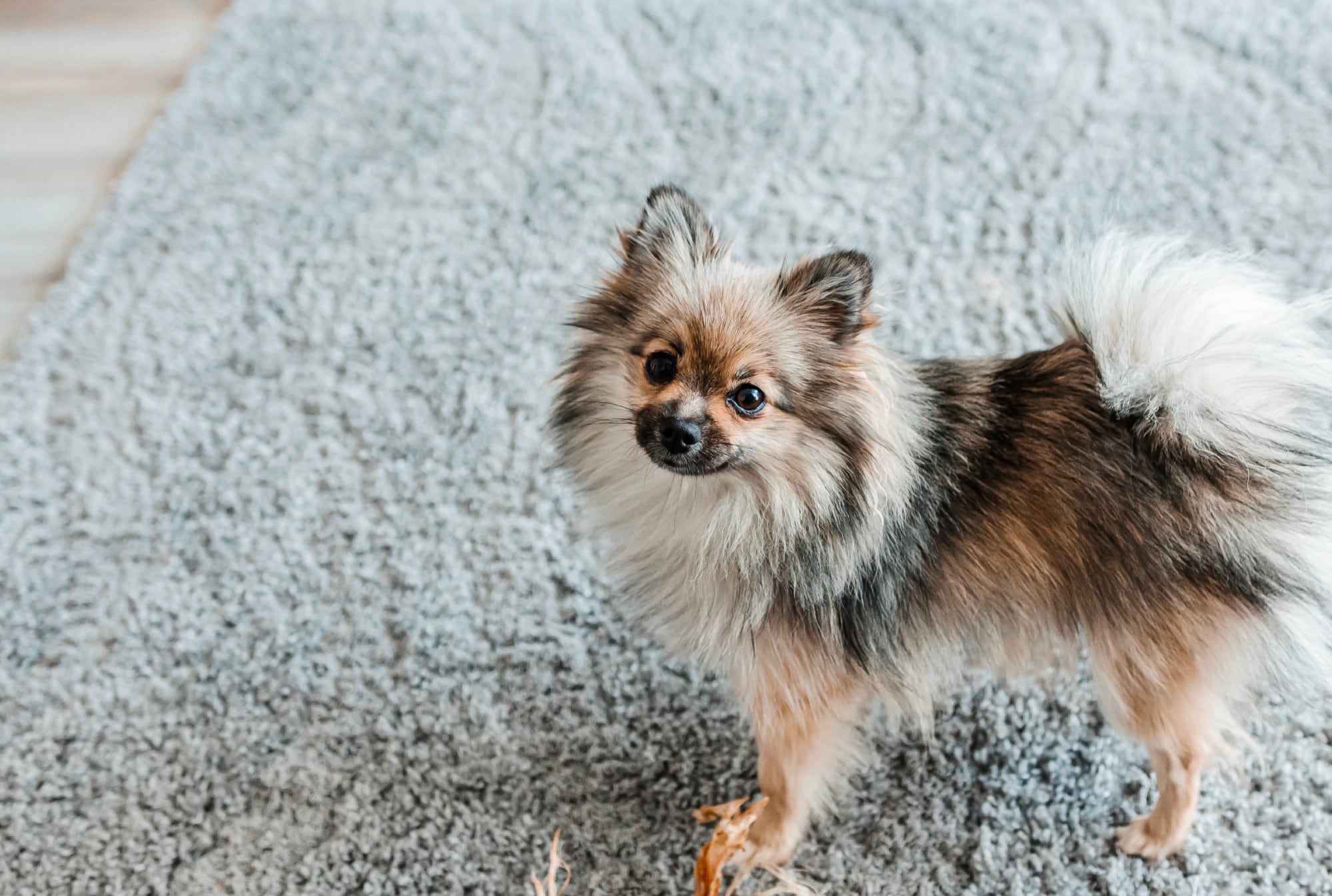It may be cold out but that doesn’t mean you should do away with regular exercise, like walks, dog parks, or a game of fetch. Indeed, movement has a ton of physical benefits, including maintaining a healthy weight and building leg muscle, while also providing mental stimulation. It can benefit you, too, as a tired dog is usually better behaved. Exercise can stop destructive behavior, like chewing, barking, and digging.
But before you get your dog into an exercise routine, it’s a good idea to talk to your vet. Discuss your dog’s breed and if there are pre-existing health issues that could pose an issue; talk about your pup’s weight and the impact it may have on a routine (overweight canines may need a different routine than ones in shape); determine if your dog’s age would affect activity level; and could your pup’s personality be a contributing factor (for example, a rowdy dog may not be best at a dog park).
When in doubt, take things slow to see how much exercise your dog is comfortable with. “On a walk, typically about 30 minutes or so should be adequate for many dogs, especially smaller ones,” says Jme Thomas, animal expert and executive director of Motley Zoo Animal Rescue. “For more interactive games like fetch or playing at the dog park, you can start with 10- or 15-minute increments of exercise and then give your dog a break.”
How to Exercise Your Dog
When it comes to choosing the type of exercise for your dog, there’s no one-size-fits-all.
MJ Viera, founder and trainer at MJ’s Pet Training Academy, says you should always think about the things a dog instinctively enjoys doing. Some dogs will be happy with a walk at the local park to smell the trees; others were bred to have a job and need exercise that also engages the brain.
“Dogs should do the things that are natural for them like tug, dig, and shred during exercise,” she says. [For instance], if your dog is always getting in trouble digging holes in the yard, make your dog a rainy-day digging pit by piling blankets and towels on top of each other and hiding toys within.”
This toy is made of hemp and recycled cotton, making it sustainable and fun! Plus the hemp’s short fibers means it sheds safer than synthetic materials while also cleaning your dog’s teeth naturally.
Can I Over Exercise My Dog?
Is there such thing as too much of something good? When it comes to dogs and exercise, the answer is … sometimes. Take, for example, a dog that’s not used to exercise. If you suddenly take that dog running with you, you risk joint issues and will end up with a very sore dog.
Or, as Viera points out, a puppy that is not fully developed doesn’t have closed growth plates, which means a lot of jumping or repetitive behaviors like running could be very damaging. “The best exercise for puppies is what they can do on their own — free time in a safe fenced-in an area for example,” Viera says.
You also need to be careful with overexercising a senior dog or pushing a dog too much when he’s used to being a couch potato. “Dogs need to build up to new fitness plans gradually just like people,” Viera says. adding that, when in doubt, you should always consult your veterinarian when it comes to your dog’s physical health and any major fitness changes.
Why Exercise Is So Important
Exercise has a slew of benefits – improving, physical, mental, and emotional health.
Let’s dive into a couple of the main perks of getting out with your dog.
Fighting Obesity
According to the Association for Pet Obesity Prevention, 59.5% of cats and 55.8% of dogs are classified as overweight or obese in the US. The APOP considers obesity a serious health treat and urges pet owners to talk to their vets to figure out a weight loss plan.
Related: Your Plump Pooch’s Extra Pounds May Be Due to ‘Obesity Gene’
While this will primarily consist of dietary changes, exercise can (and should) be part of the equation. “Studies have proven that dogs that are walked regularly by their owners are less likely to be overweight,” says Dr. Ellen Marcinkiewicz, veterinary advisor at The Vets. “If your dog is currently overweight it’s important to start with gentle exercise and build up gradually. Be aware of your dog’s current capabilities and if you have any concerns, it’s always best to ask your vet.”
Mentally Stimulating
Physical activity is an important source of mental stimulation, which can help prevent behavioral problems such as boredom and frustration. “Dogs that don’t get enough exercise may be more likely to develop issues such as excessive barking or destructive chewing,” explains Marcinkiewicz. “This has a negative impact on animal welfare and puts a strain on the human-dog relationship.”
Related: 19 of the Best Interactive Dog Puzzles and Games for Your Bored Pooch
In addition, Thomas of Motley Zoo Animal Rescue points out that dogs require an outlet to be well-behaved because otherwise their energy just builds up and they don’t know how to release it, so it will manifest in bad behaviors, whether pacing, jumping, barking, or even biting. “The lack of an outlet can cause anxiety and neuroses to develop, so it is important to think of your dog like a can of soda that’s been shaken; it will explode if you’re not careful,” Thomas explains.
Our Bye Bye Pup Worries use powerful natural ingredients like lemon balm and green tea to helps relieve nervousness, anxiety, and stress, so you can have a relaxed and happy pooch. Made in the USA.
Keeps Joints Healthy
Regular exercise plays an important role in joint health and mobility, according to Marcinkiewicz. It keeps joints limber and strengthens the muscles that support those joints, as joints that aren’t used regularly become stiff and achy. So when movement occurs, it provides natural lubrication to joints, which helps build cartilage.
However, you should always be cautious about pushing too much too quickly. A very overweight dog or one with advanced arthritis cannot go from being completely sedentary to taking one-hour long walks. This will actually cause pain and can damage the joints even more. Instead, try swimming or gentle on-leash walks. Even 15 minutes a day will make a difference.
Bye Bye Doggy Aches chews are vet formulated and have more than 1,000 mg of powerful natural ingredients to help your pup deal with occasional discomfort. Glucosamine HCl, MSM, green-lipped mussels, and chondroitin support mobility and flexibility while also stimulating cartilage growth and maintaining joint lubrication. Made in the USA.
What Happens If Your Dog Can’t Exercise?
If you’re concerned about your dog not being able to exercise, always talk to your vet. “If your dog has recently undergone surgery or has a medical condition that may affect their ability to exercise (like osteoarthritis), it’s important to seek veterinary advice first,” says Marcinkiewicz, who adds there’s usually an alternative even for those cases. “Dogs with arthritis often benefit from gentle low-impact exercises, such as leash walking and swimming.”
Even more importantly, Thomas emphasizes that you should always watch out for cues that you’re asking for too much. “Many dogs will push back if the exercise lasts too long, but it’s important to distinguish whether this is resistance to using the leash, fear of the environment, or something else besides being exhausted,” she explains.
When in doubt, stop and go home for some snuggling on the couch – risking an injury is never worth it.





















